Time For The Fireworks At Old Ranch!!! (Page Five)
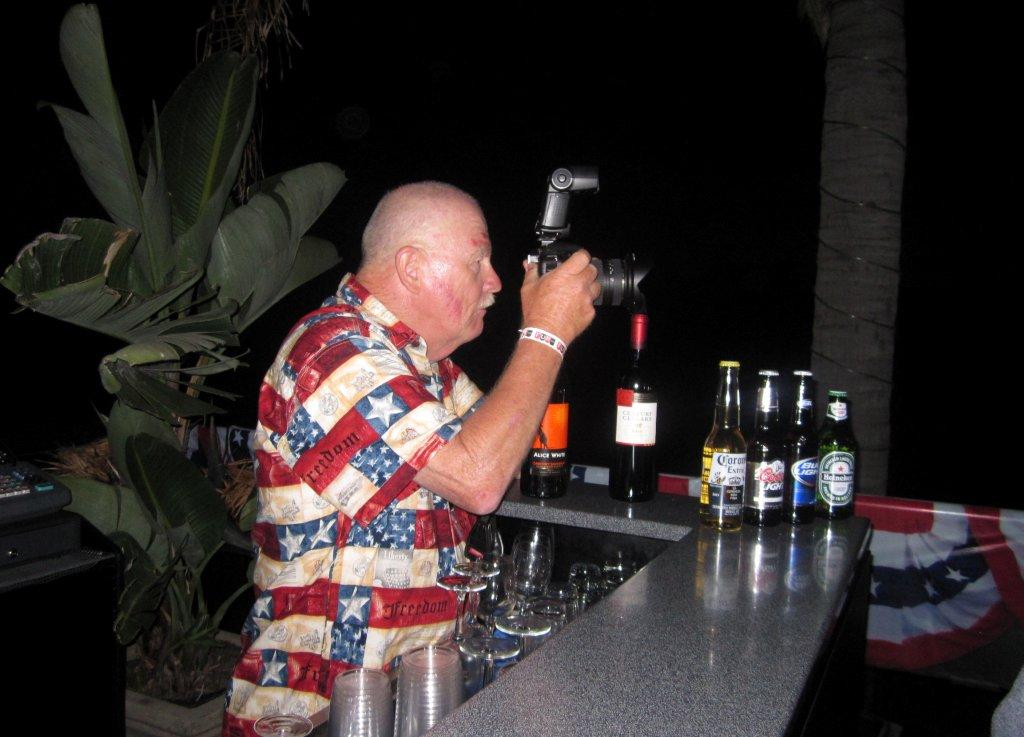
Snap a picture, sneak a drink... I like this
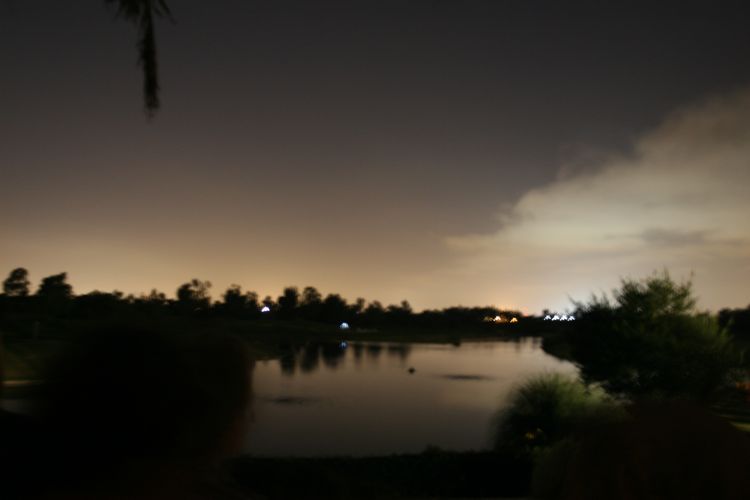
All calm before the storm
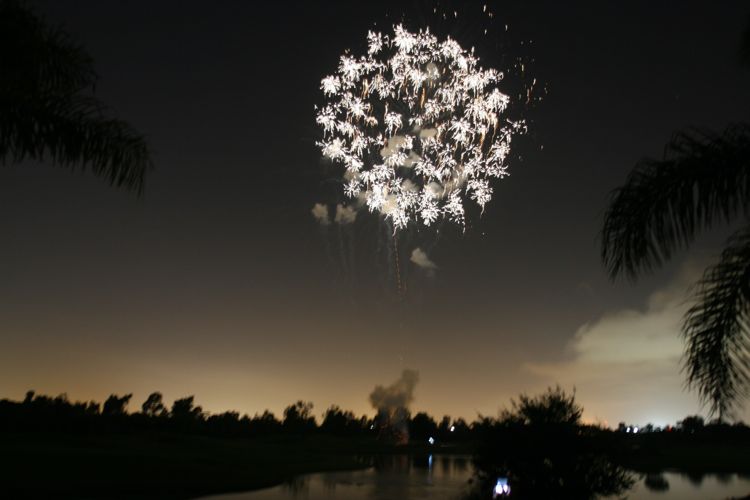
Boom
Did you know? - Fireworks were invented in ancient China in the 12th century to scare away evil spirits, as a natural extension of the Chinese invention of gunpowder. Such important events and festivities as Chinese New Year and the Mid-Autumn Moon Festival were and still are times when fireworks are guaranteed sights. China is the largest manufacturer and exporter of fireworks in the world.

Amazing... We were right there!
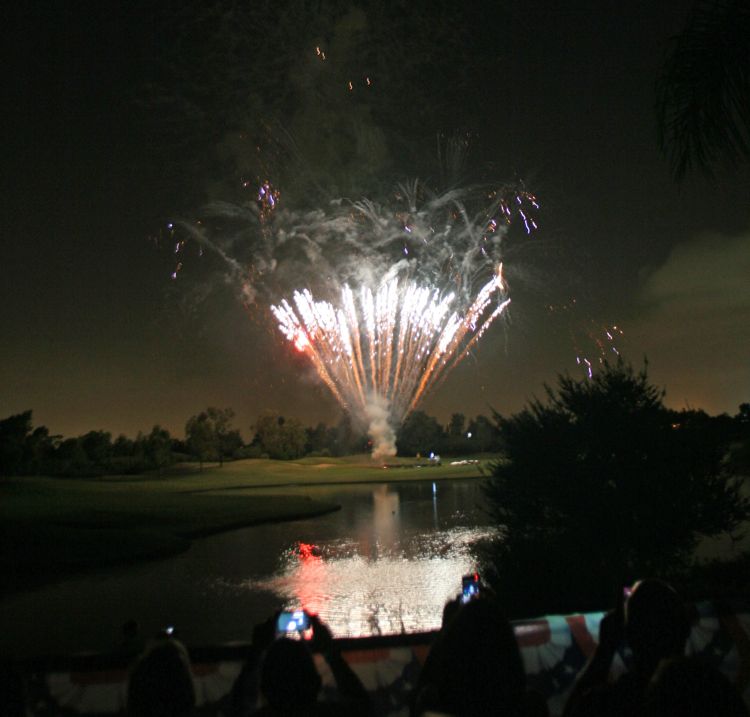
Did you know? - The earliest documentation of fireworks dates back to 7th century China where they were first used to frighten away evil spirits with their loud sound (鞭炮/鞭砲 biān pào) and also to pray for happiness and prosperity.

Reflections in the lake

Image stabalized
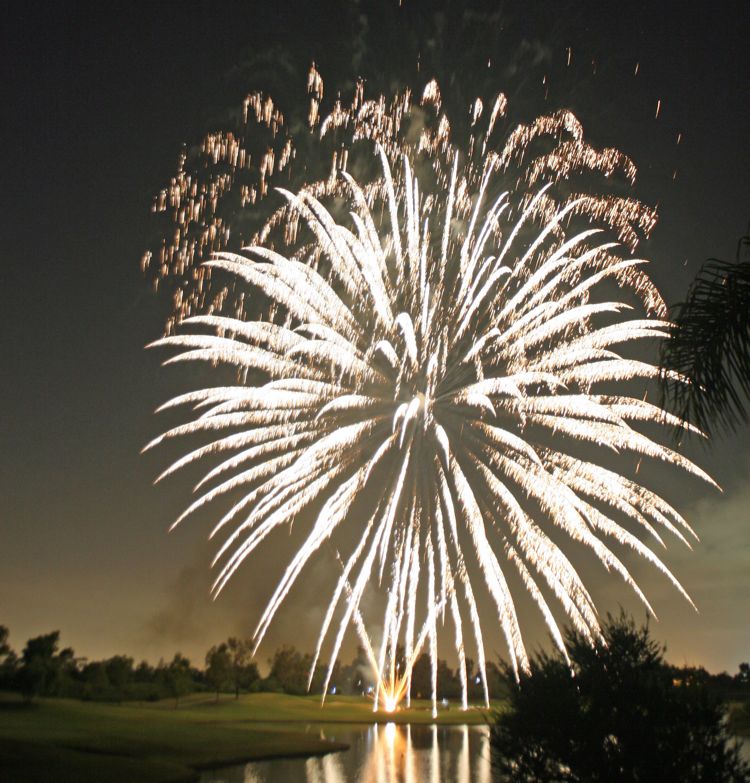

Did you know? - Eventually, the art and science of firework making developed into an independent profession. In ancient China, pyrotechnicians (firework-masters) were well-respected for their knowledge and skill in mounting dazzling displays of light and sound.
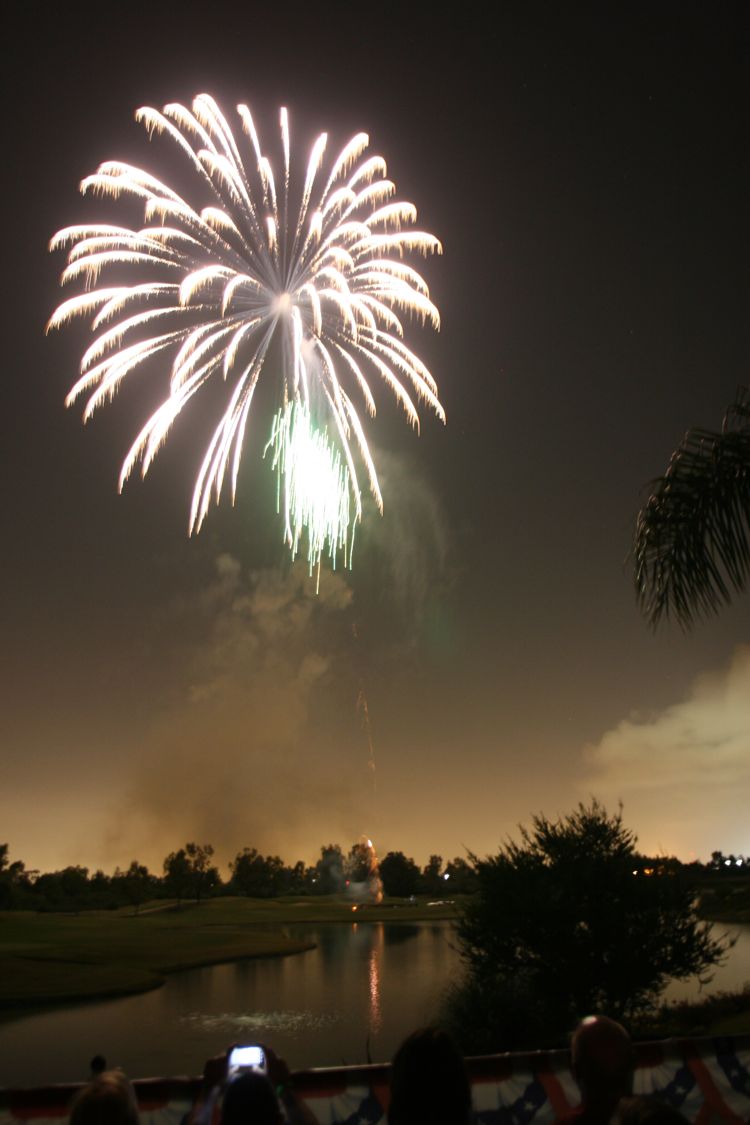
Where are the ducks???

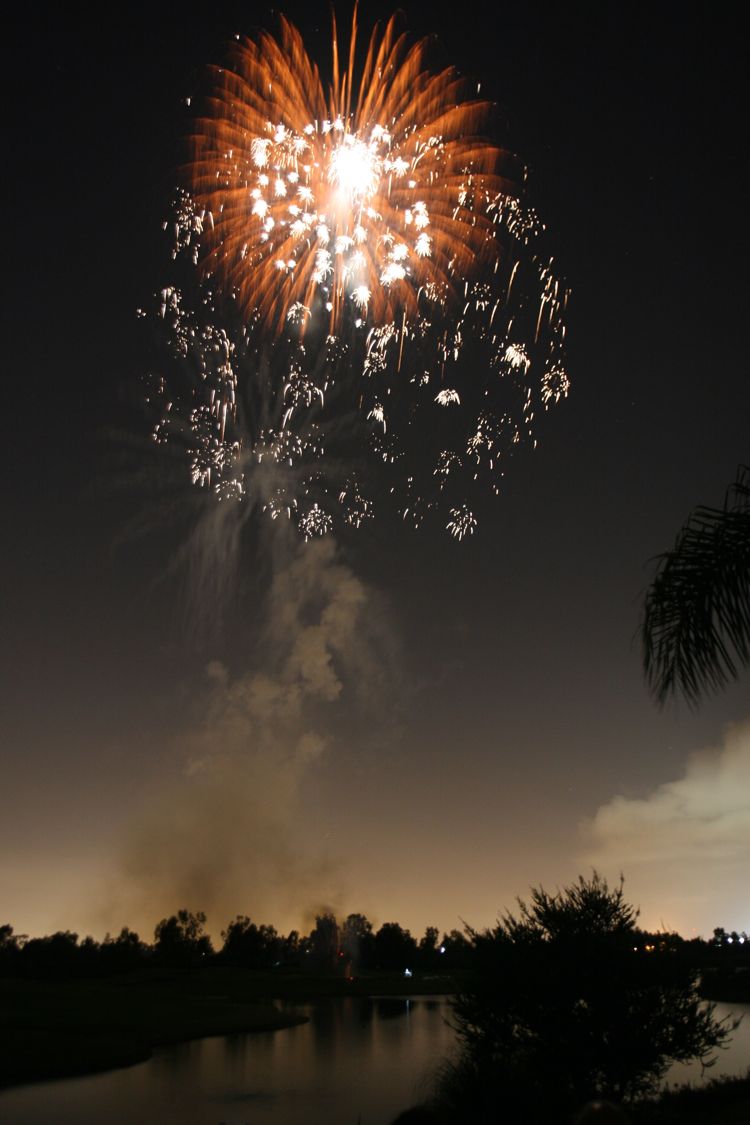
Did you know? - America's earliest settlers brought their enthusiasm for fireworks to the United States. Fireworks and black ash were used to celebrate important events long before the American Revolutionary War. The very first celebration of Independence Day was in 1777, six years before Americans knew whether the new nation would survive the war; fireworks were a part of all festivities. In 1789, George Washington's inauguration was also accompanied by a fireworks display.
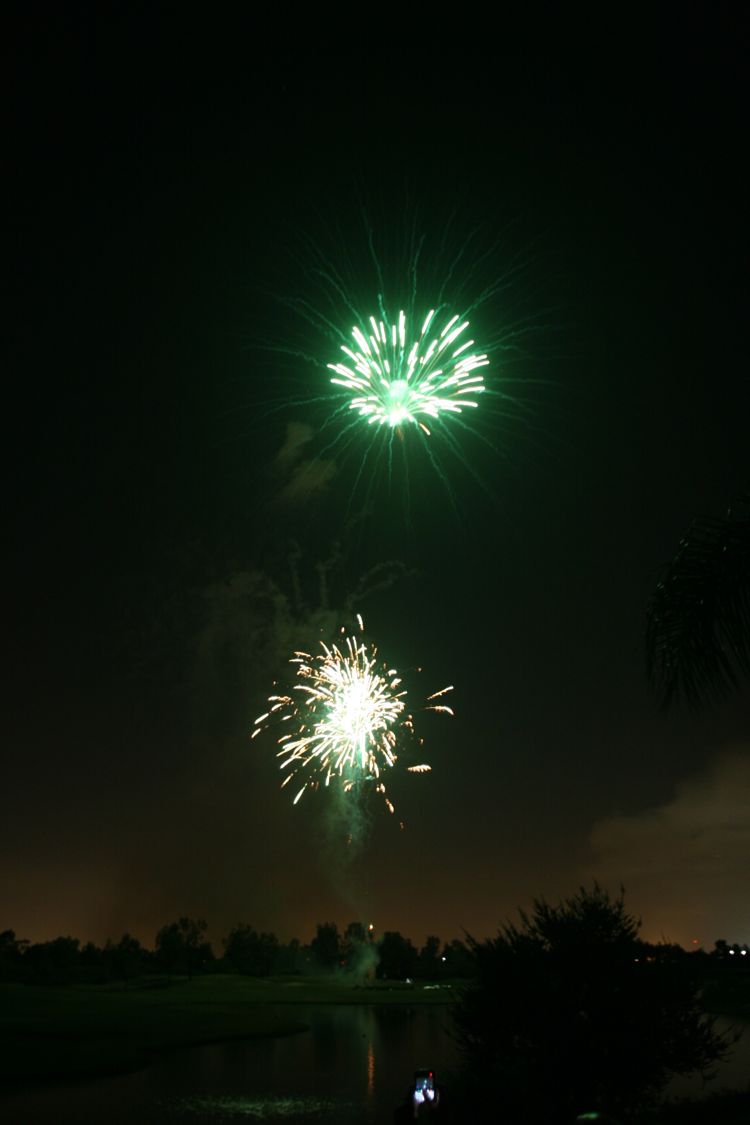

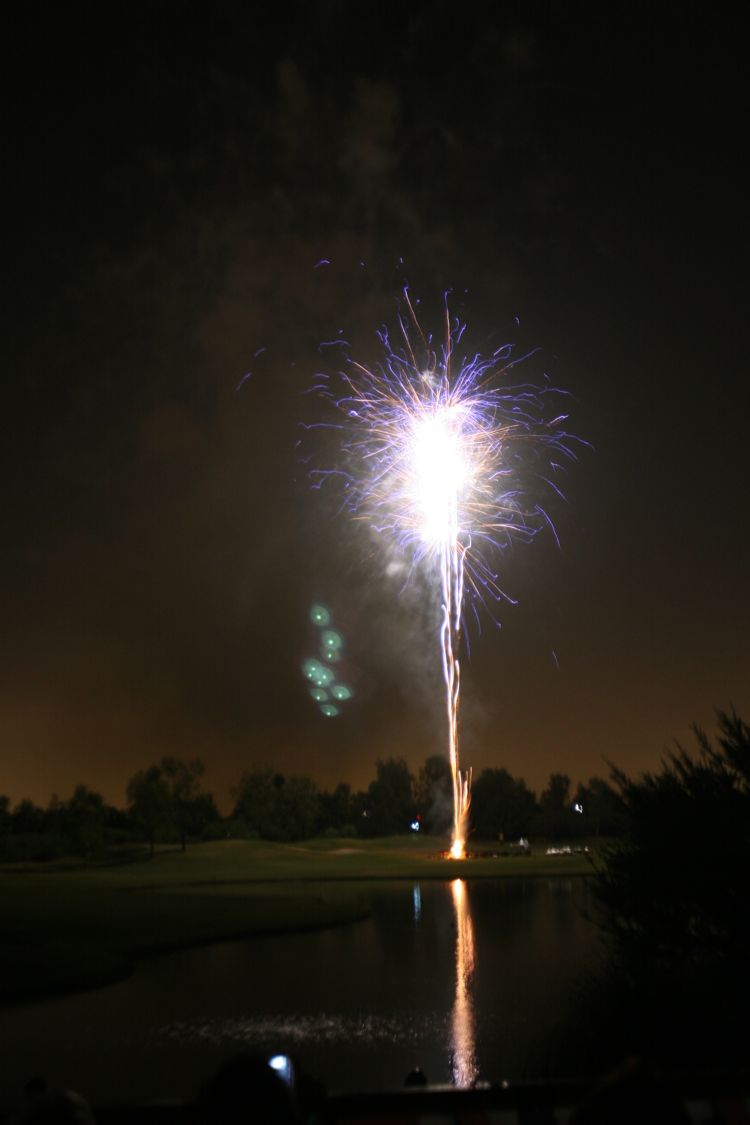
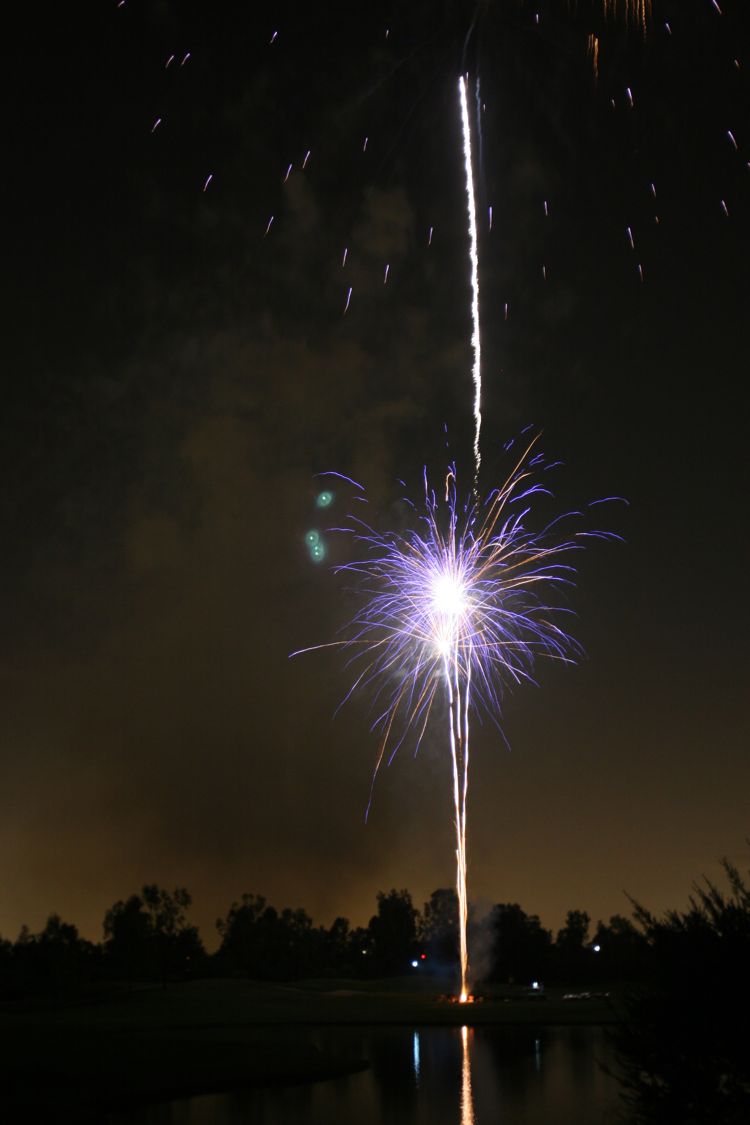
Did you know? - In 2004, Disneyland in Anaheim, California, pioneered the commercial use of aerial fireworks launched with compressed air rather than gunpowder. The display shell explodes in the air using an electronic timer. The advantages of compressed air launch are a reduction in fumes, and much greater accuracy in height and timing.
The Walt Disney Company is the largest consumer of fireworks in the United States.
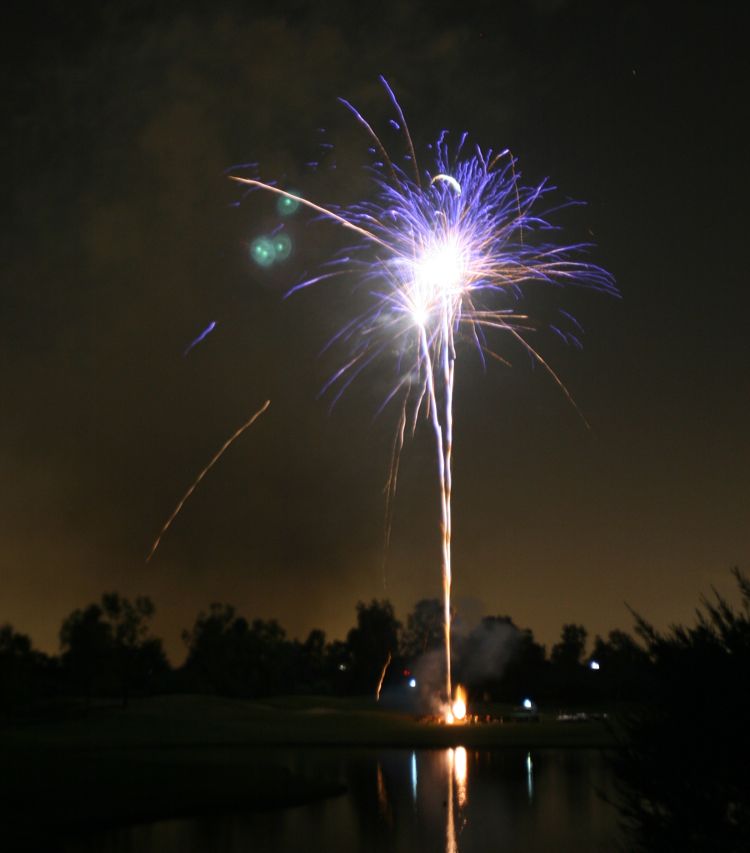

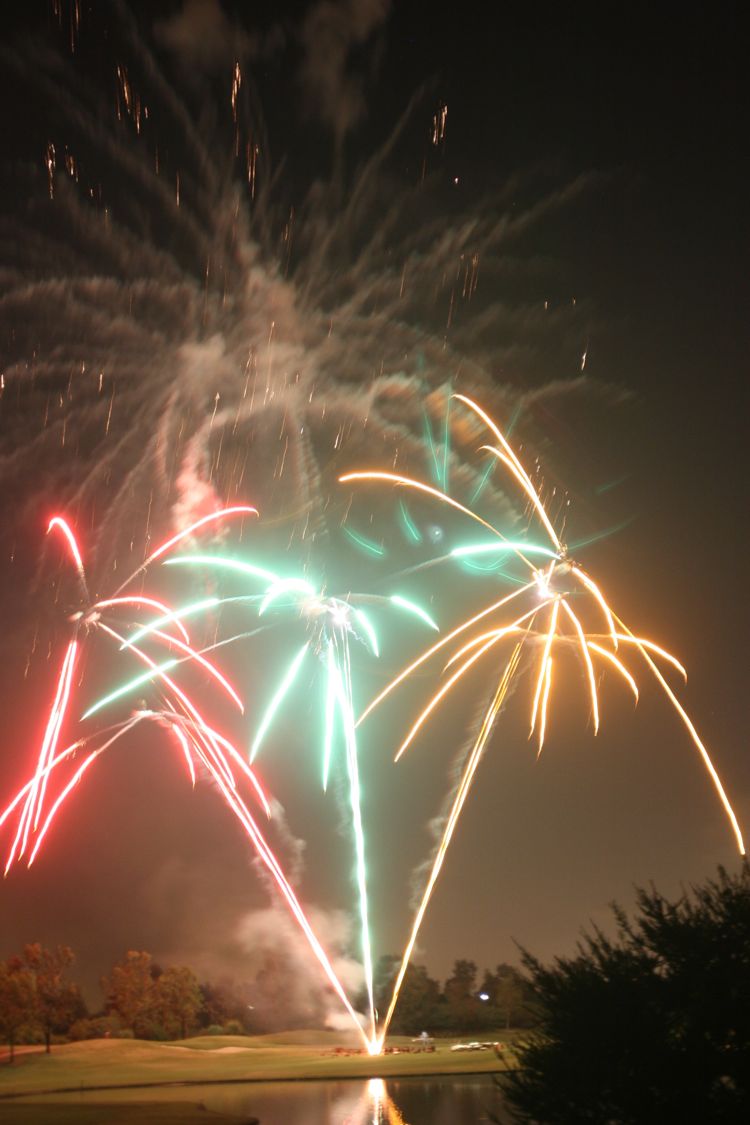
....and the crowd roared
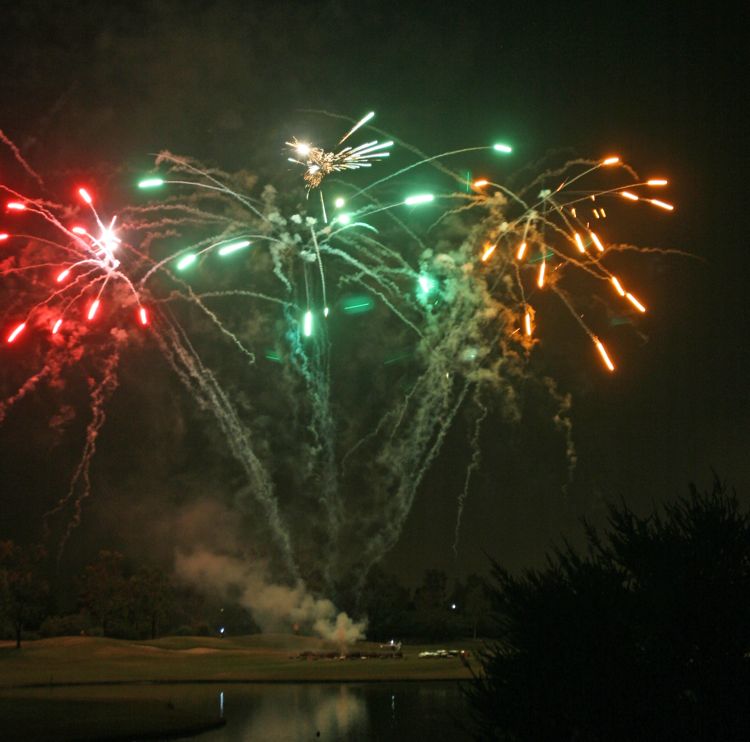
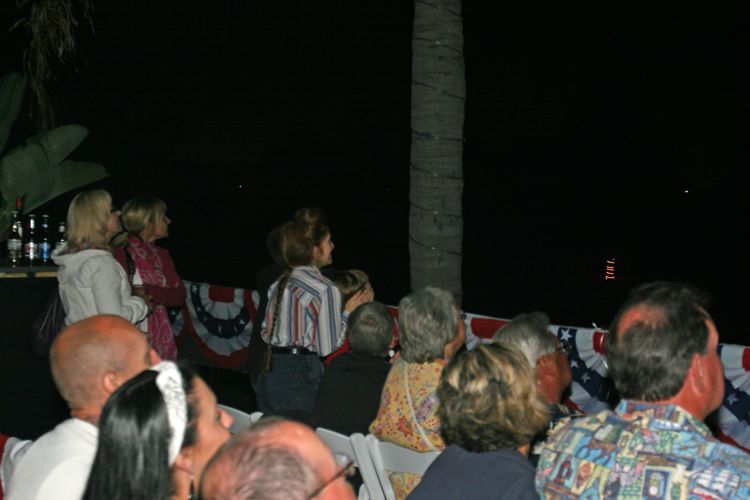
Theo was squealing his head off in enjoyment

Boom
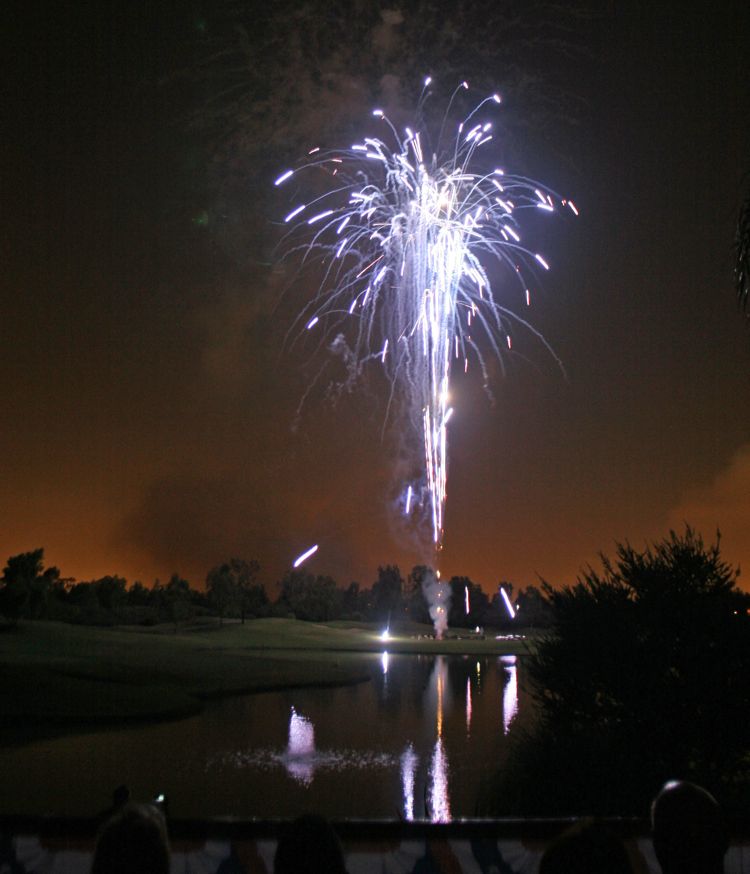


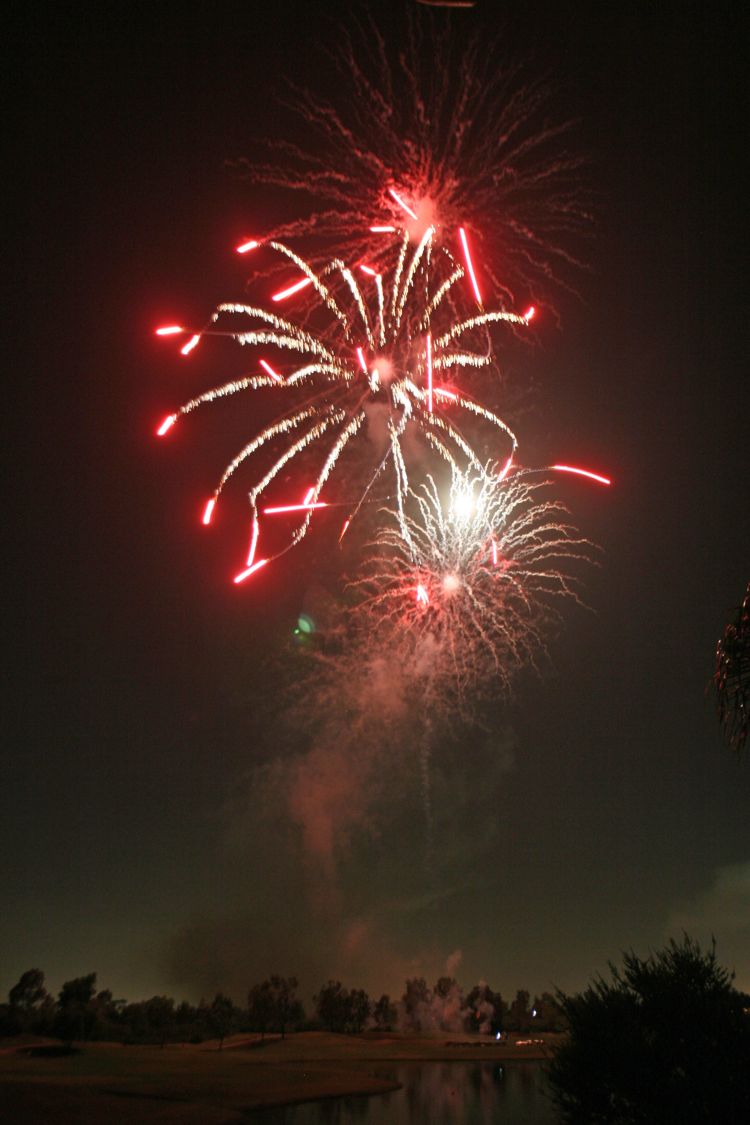
Did you know? - The colors come from:
| Color | Metal | Example compounds |
|---|---|---|
| Red | Strontium (intense red)
Lithium (medium red) |
SrCO3 (
strontium carbonate
)
Li2CO3 ( lithium carbonate ) LiCl ( lithium chloride ) |
| Orange | Calcium | CaCl2 ( calcium chloride ) |
| Yellow | Sodium | NaNO3 ( sodium nitrate ) |
| Green | Barium | BaCl2 ( barium chloride ) |
| Blue | Copper halides | CuCl2 ( copper chloride ), at low temperature |
| Indigo | Cesium | CsNO3 ( cesium nitrate ) |
| Violet | Potassium
Rubidium (violet-red) |
KNO3 (
potassium nitrate
)
RbNO3 ( rubidium nitrate ) |
| Gold | Charcoal , iron , or lampblack | |
| White | Titanium , aluminium , beryllium , or magnesium powders | |
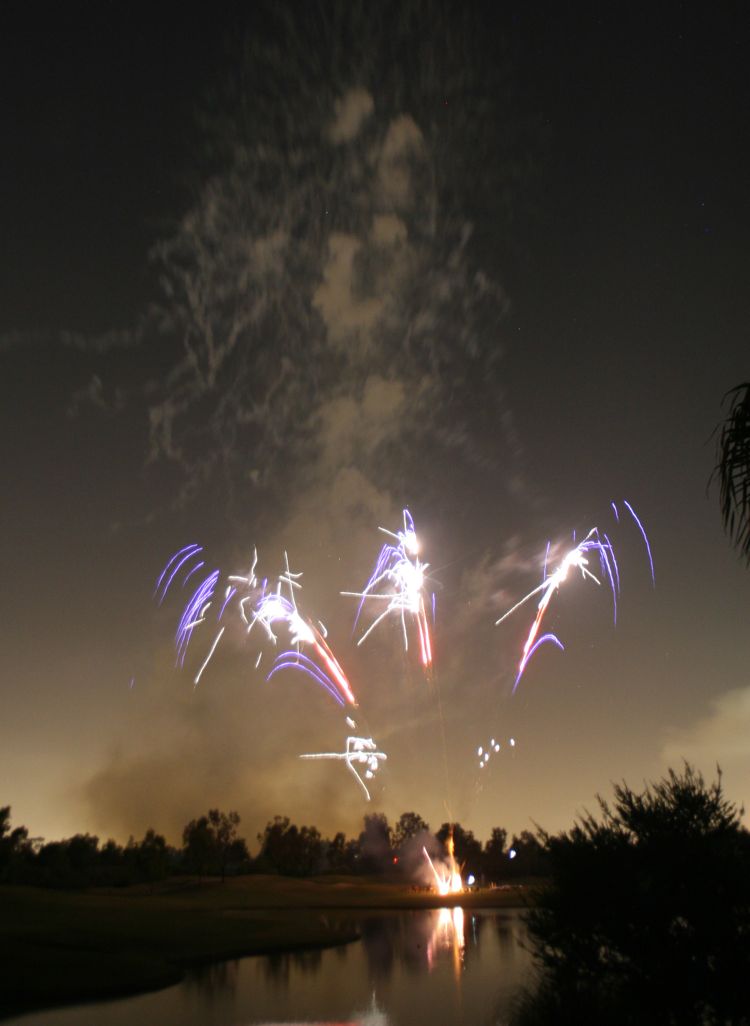

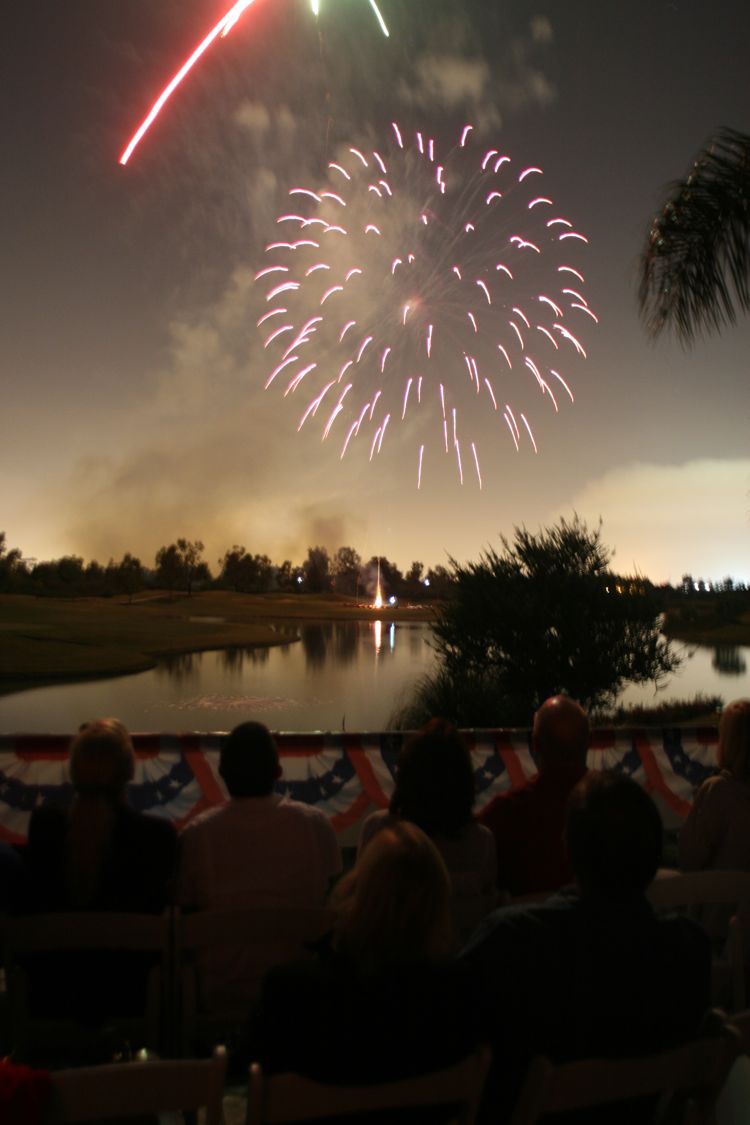
Everybody enjoyed them so very much
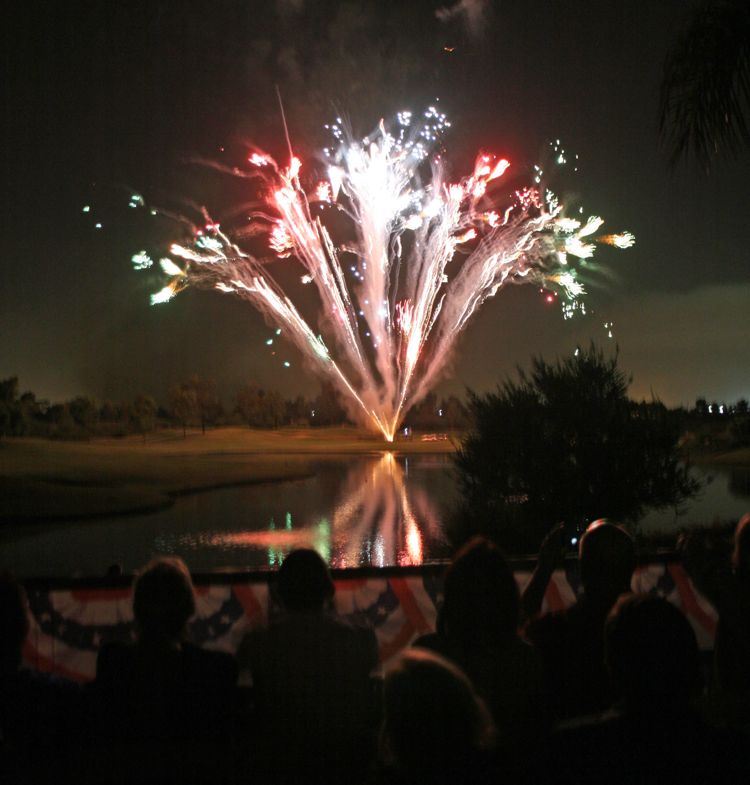
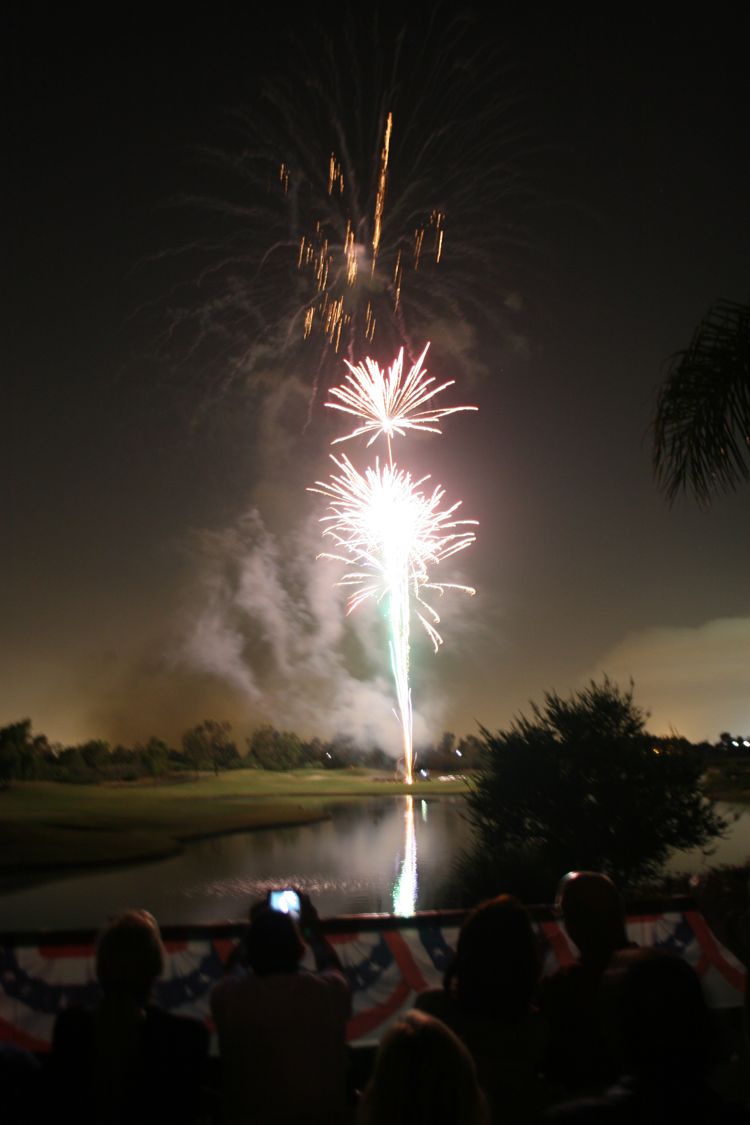
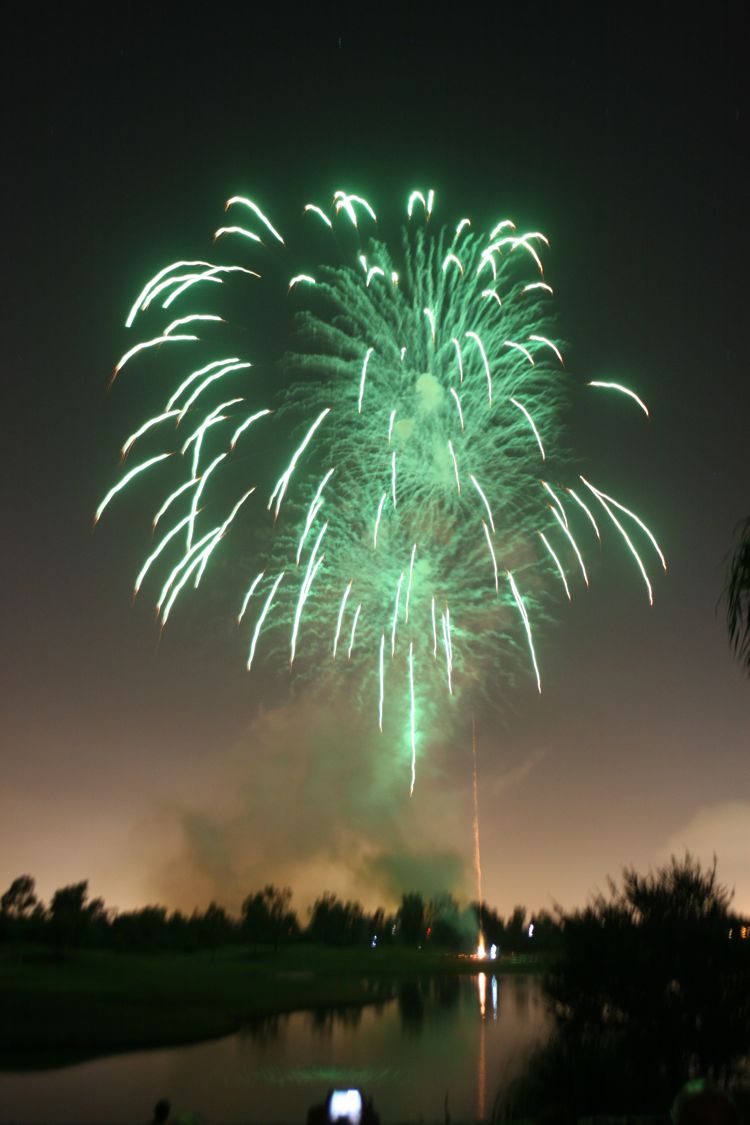
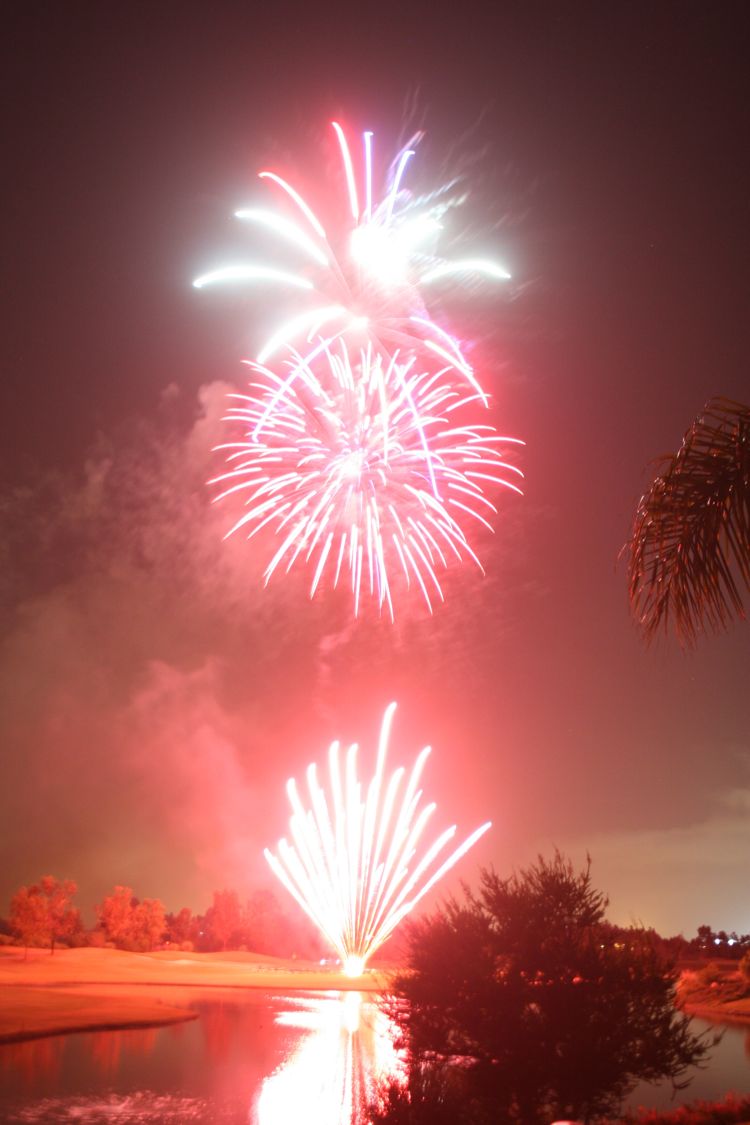
The whole course was lit up


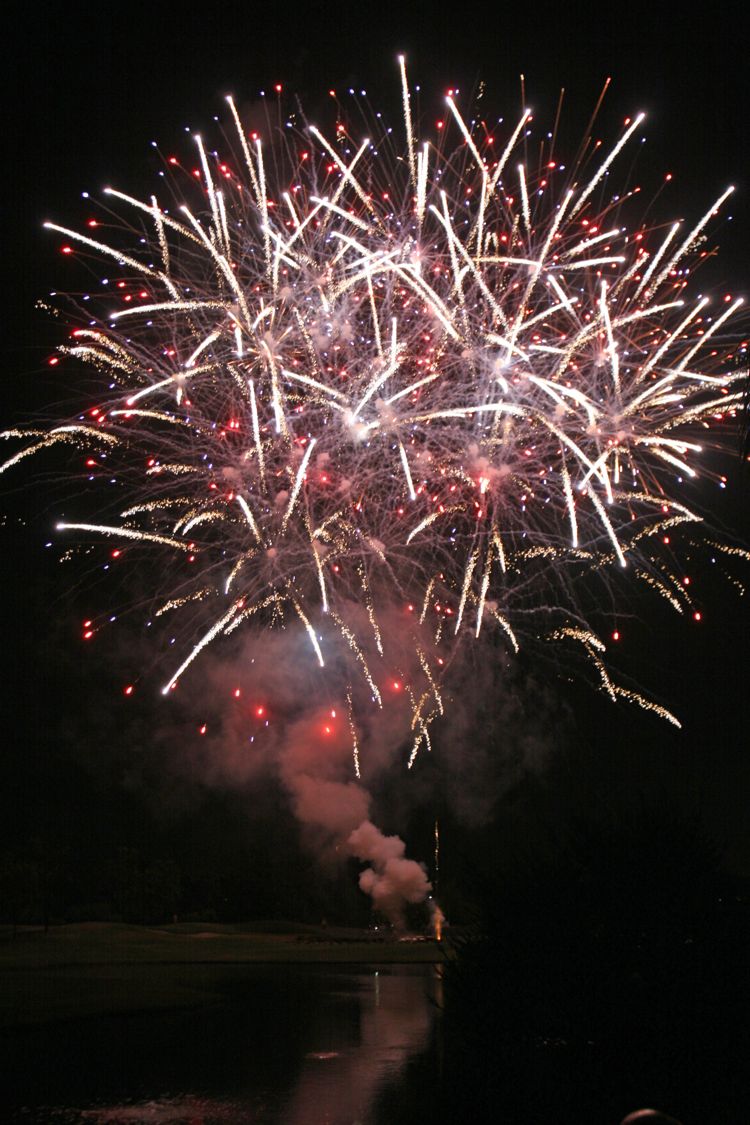
Amazing

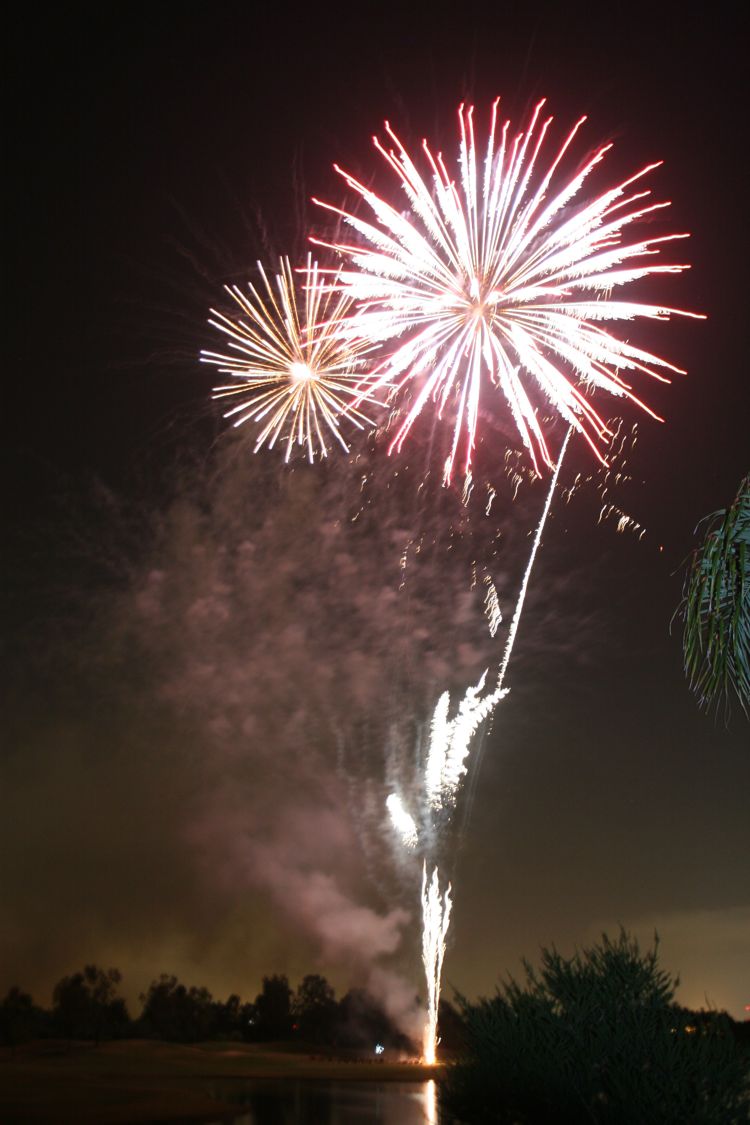
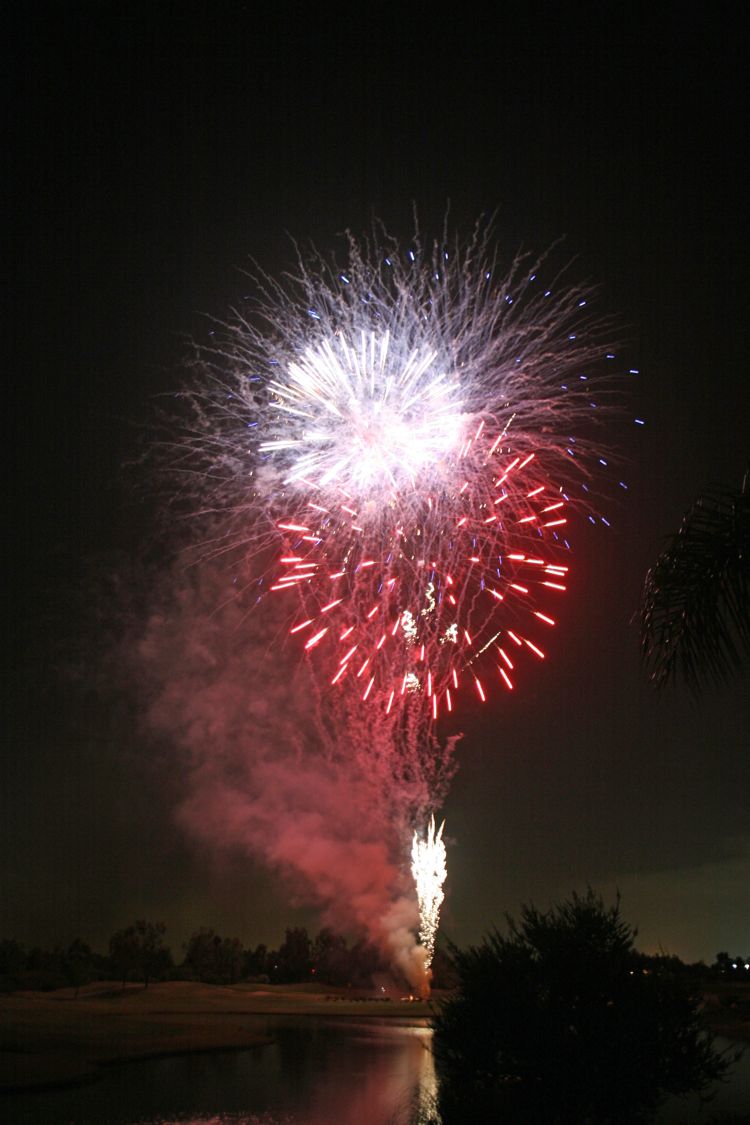
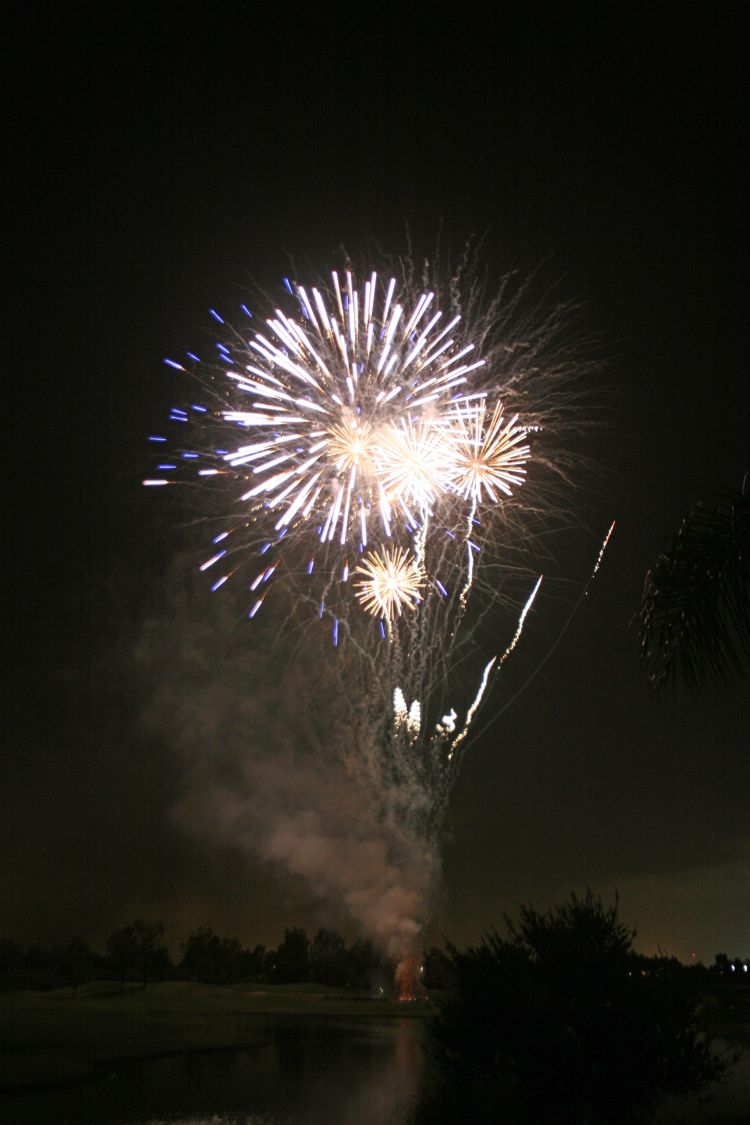


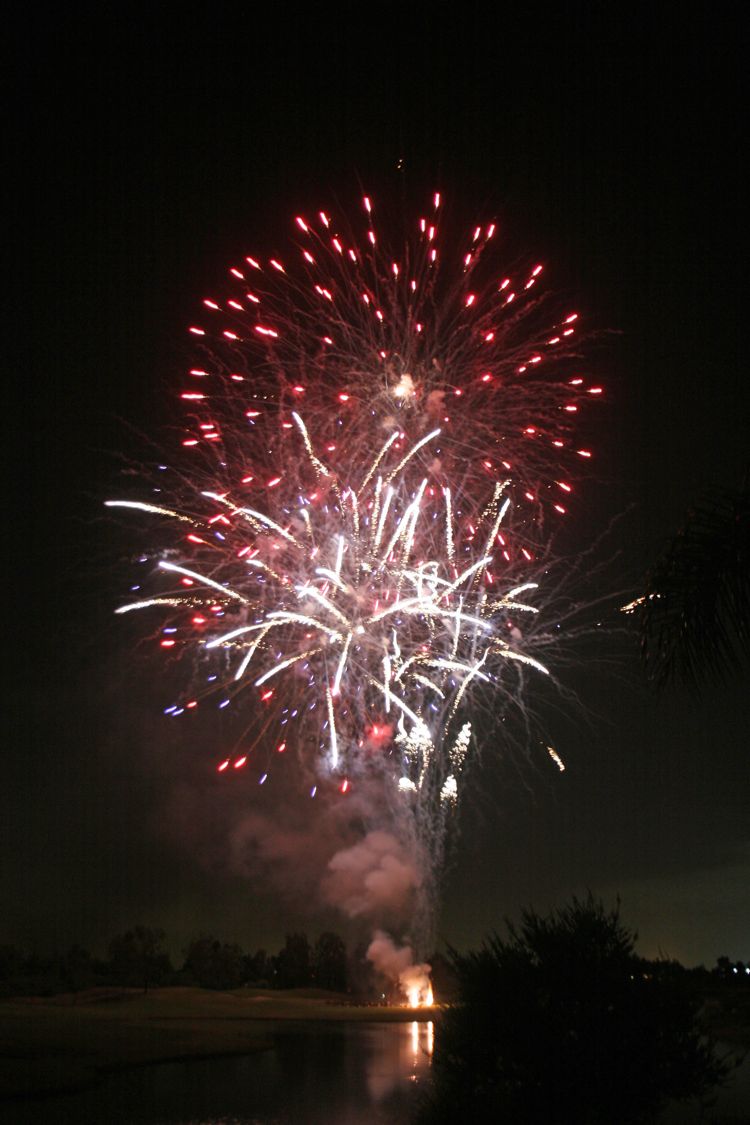

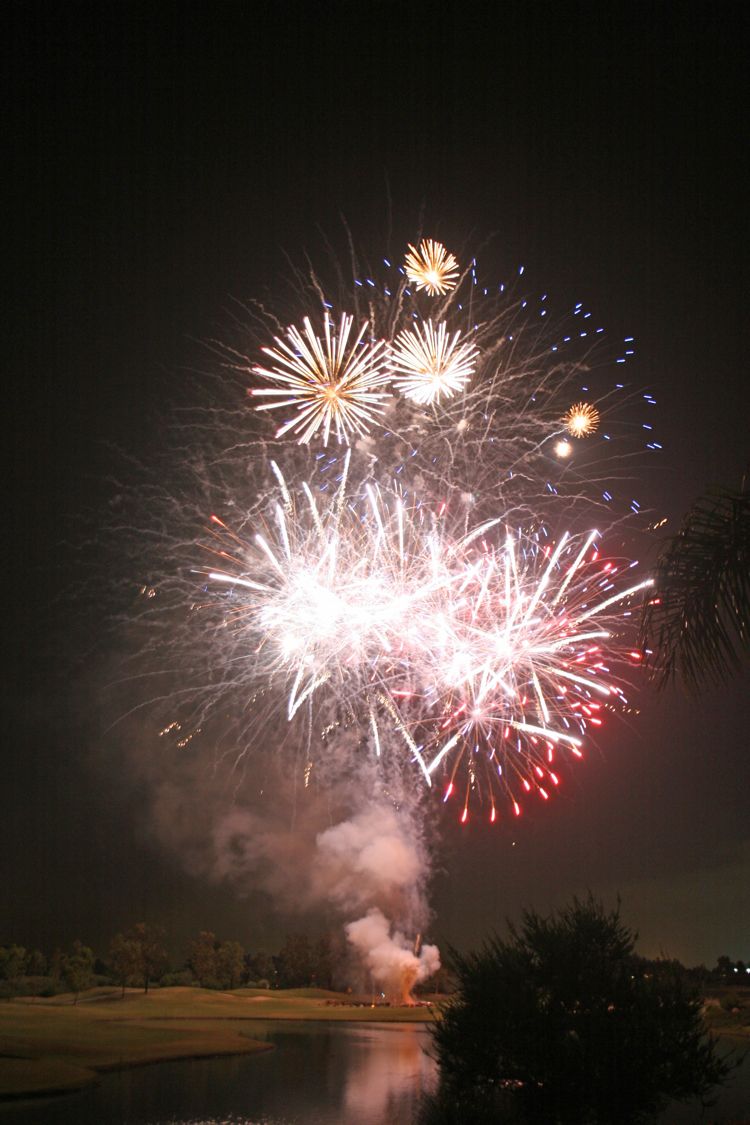
Did you know? -
Colors in fireworks are usually generated by pyrotechnic stars—usually just called stars—which produce intense light when ignited. Stars contain five basic types of ingredients.
- A fuel which allows the star to burn
- An oxidizer—a compound which produces (usually) oxygen to support the combustion of the fuel
- Color-producing chemicals
- A binder which holds the pellet together.
- A chlorine donor which provides chlorine to strengthen the color of the flame. Sometimes the oxidizer can serve this purpose.
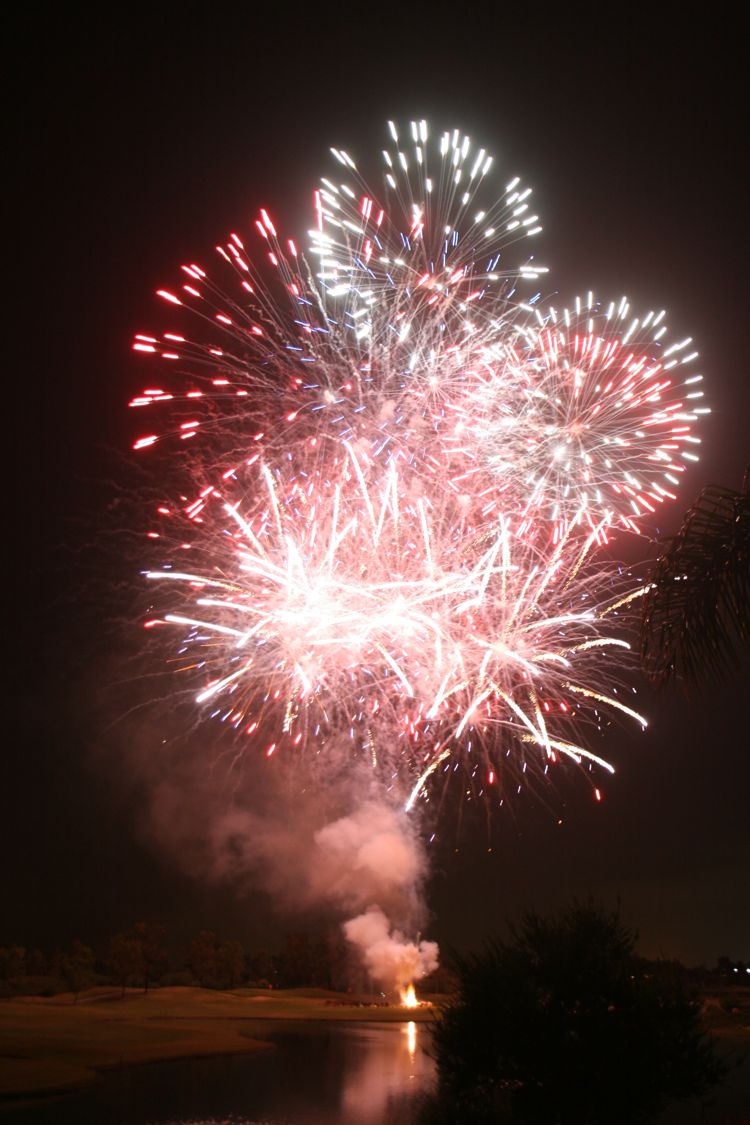


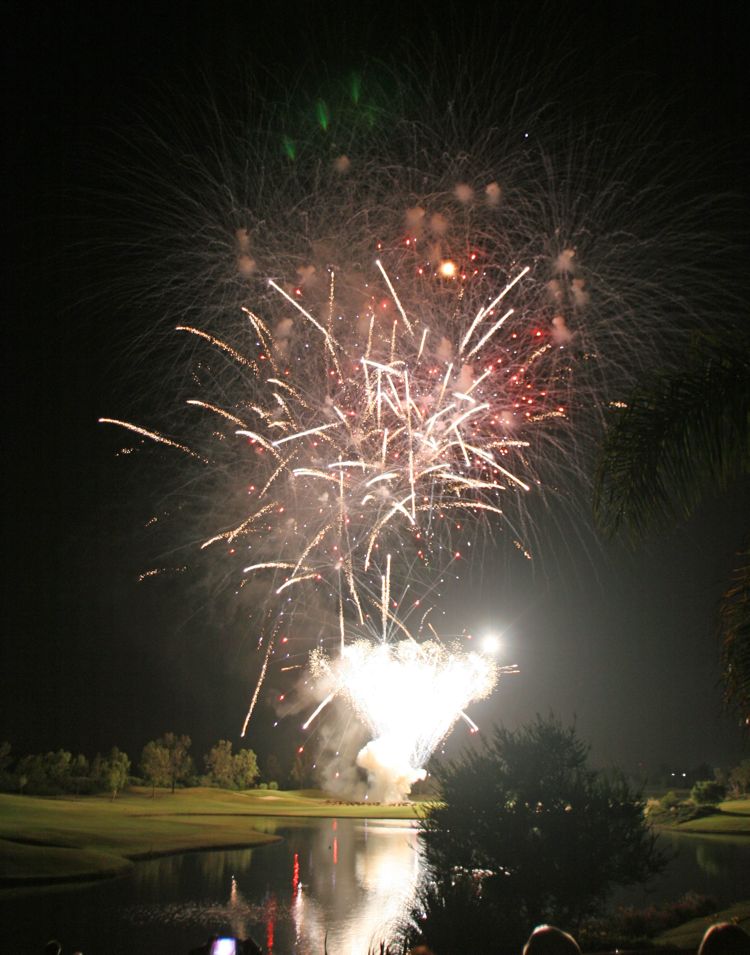
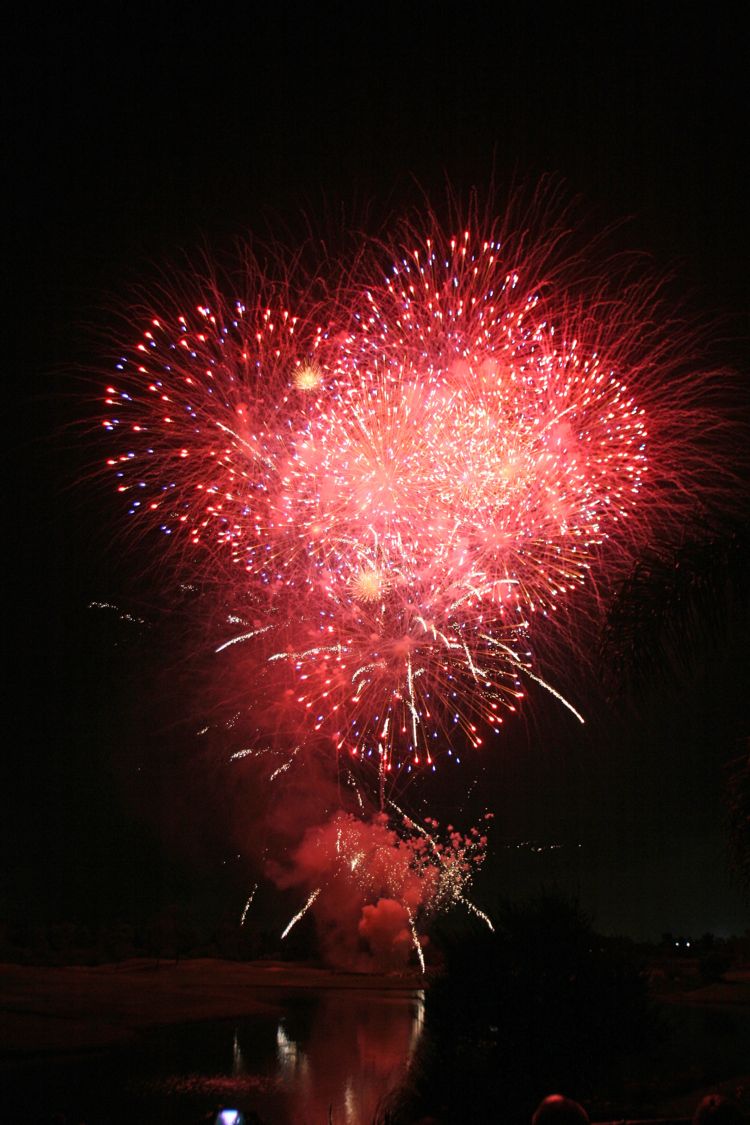
Wow... Just Wow!